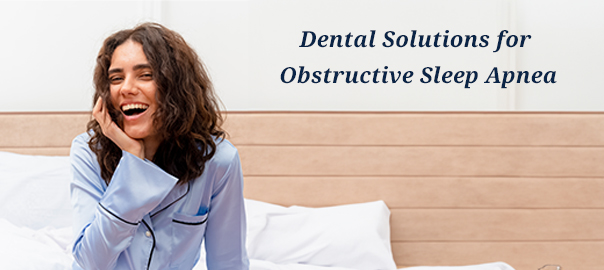
Dental Solutions for Obstructive Sleep Apnea (OSA): A Multidisciplinary Approach
Introduction
Obstructive sleep apnea (OSA) is a sleep disorder where breathing stops repeatedly during sleep. This happens because the airway in the throat closes off. Many people have OSA, but not all know it.
For a long time, sleep doctors were the main experts in treating OSA. They would do sleep tests and often suggest using a CPAP machine. A CPAP machine pushes air into the airway to keep it open.
Now, dentists are also helping treat OSA. Their understanding of the oral anatomy, jaw positions and how the oral structures work together helps them offer a different kind of treatment.
This article looks at how dentists help with OSA. Understanding the dental approach to OSA gives patients more options. Some people find CPAP machines hard to use. For these patients, a dental mouthpiece might be a good choice.
By learning about dental treatments for OSA, readers can better understand all their options for dealing with this sleep problem.
Dental Screening for OSA
Dentists are well-positioned to identify anatomical risk factors for OSA during routine examinations. Key observations include:
- Macroglossia (enlarged tongue)
- Tonsillar hypertrophy
- Retrognathia (recessed lower jaw)
- Narrow palatal arch
These findings may prompt referral for polysomnography, the gold standard for OSA diagnosis.
Custom Oral Appliances
Dentists are qualified to create customized appliances for OSA due to their understanding of the anatomy and functions of the mouth. Everybody’s mouthpiece is manufactured specifically to fit them. They keep the airway open while you sleep by moving the tongue or jaw. Mandibular advancement devices, or MADs, are the most popular oral appliance for those with OSA. Their mode of action involves:
- Protrusion of the mandible
- Anterior displacement of the tongue base
- Increased pharyngeal airway patency
Custom-fabricated MADs offer several advantages over prefabricated devices:
- Precise fit to dentition
- Adjustable mandibular protrusion
- Improved patient comfort and adherence
Fabrication Process
- Dental impressions or intraoral scanning
- Bite registration in protrusive position
- Laboratory fabrication of the appliance
- Chairside fitting and adjustment
- Titration based on symptomatic improvement and follow-up sleep studies
Efficacy and Indications
Research shows that custom oral appliances can reduce the apnea-hypopnea index (AHI) in mild to moderate OSA. They are particularly useful for:
- CPAP-intolerant patients
- Those with positional OSA
- As an adjunct to CPAP therapy
Dental Considerations
Regular dental follow-up is crucial for patients using oral appliances. Potential dental side effects include:
- Occlusal changes
- Temporomandibular joint discomfort
- Dental mobility
Appropriate appliance design and adjustment can frequently alleviate these problems.
Interdisciplinary Collaboration
Optimal management of sleep apnea requires cooperation between dentists, sleep physicians, and other specialists. This team approach ensures:
- Accurate diagnosis
- Appropriate treatment selection
- Continuous monitoring and adjustment
Summary:
In the interdisciplinary care of OSA, dentists are essential. By means of meticulous examination, personalized oral appliance therapy, and continuous dental attention, they considerably enhance patient results about this intricate sleep issue.
Leave a Reply
Leave a Reply
Explore More Similar Posts
Explore More Blogs


Leave a Reply